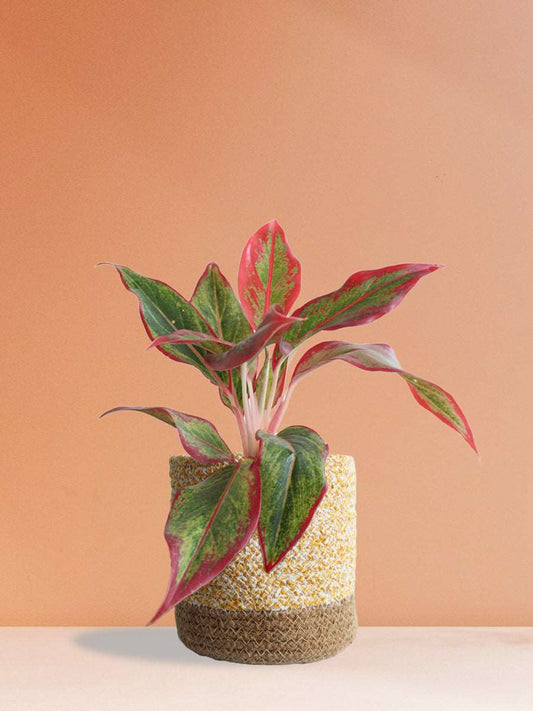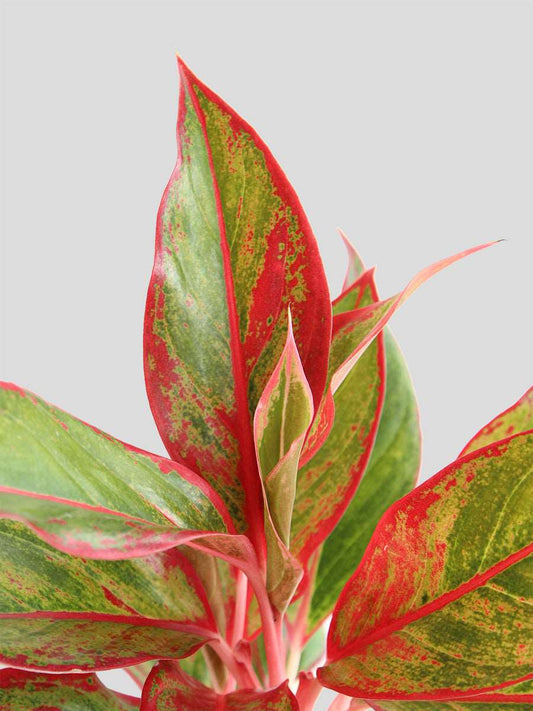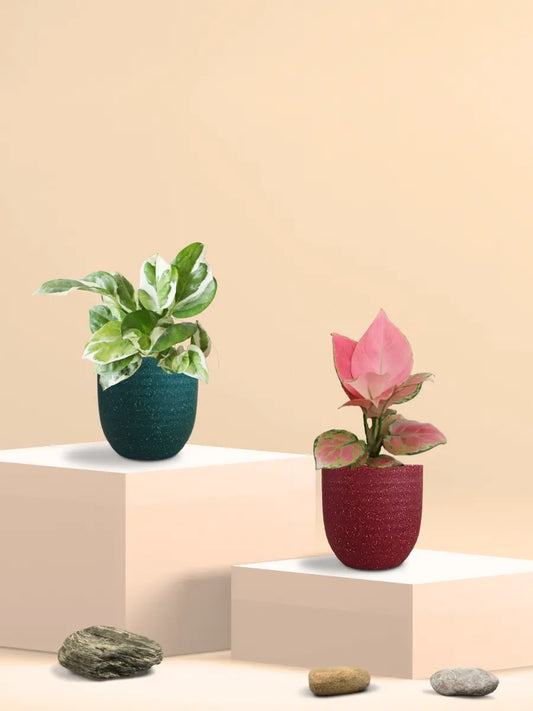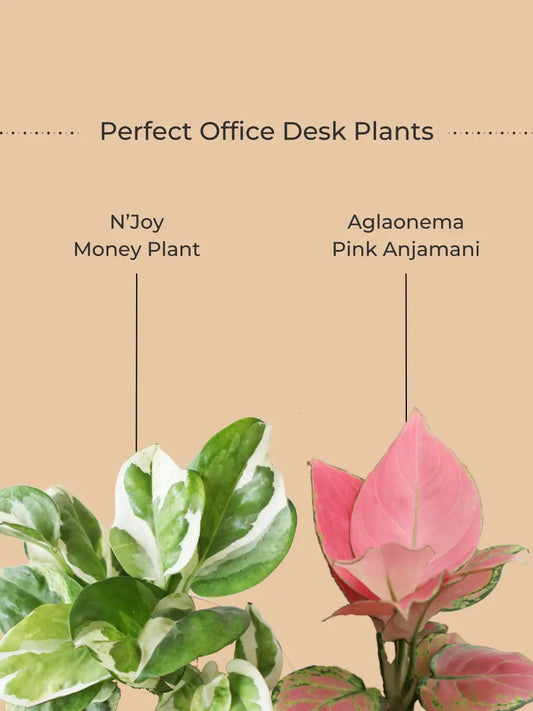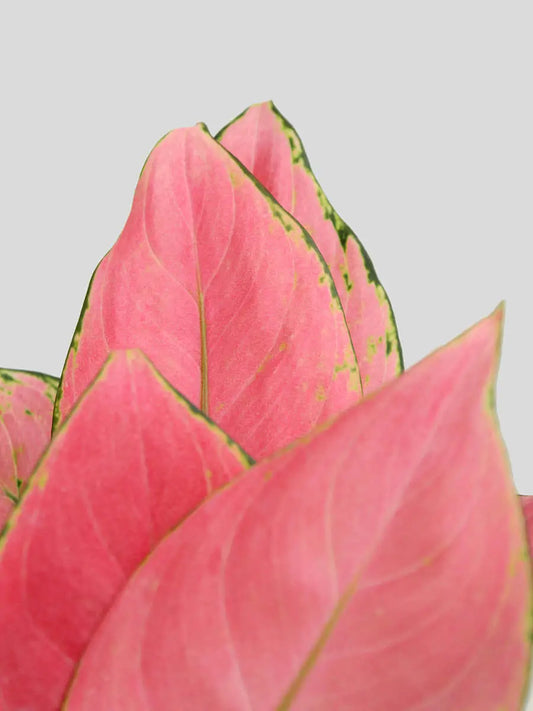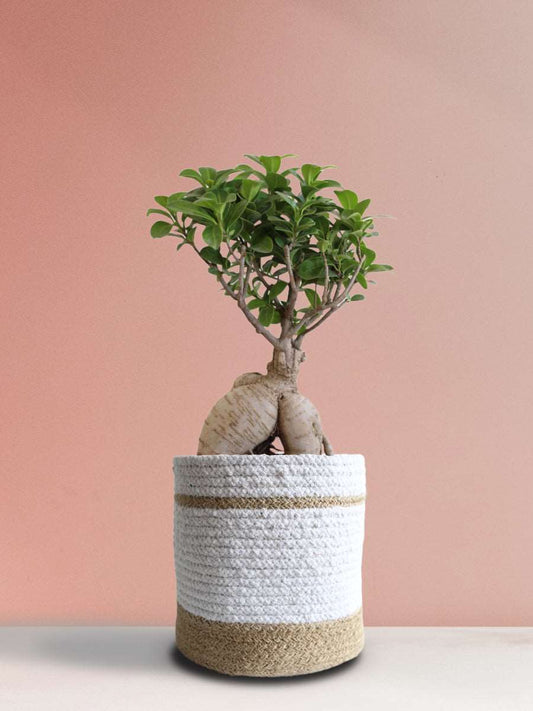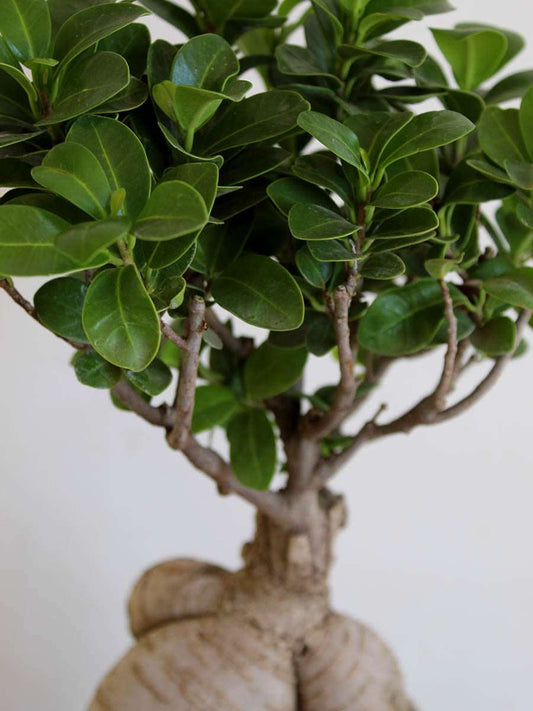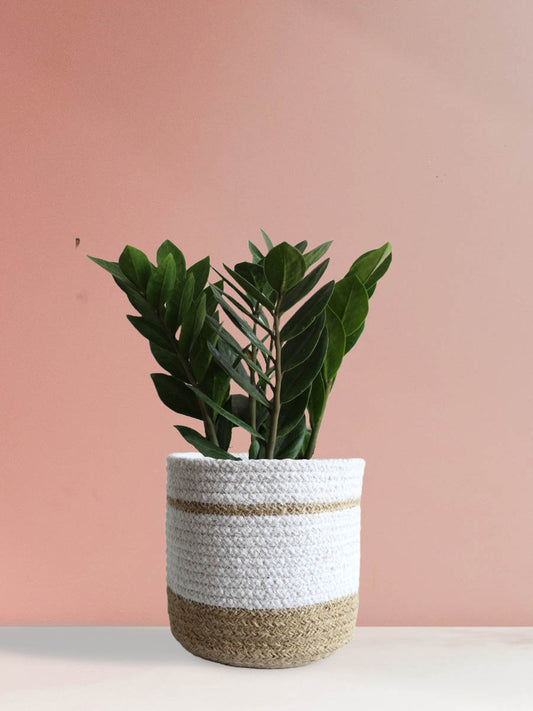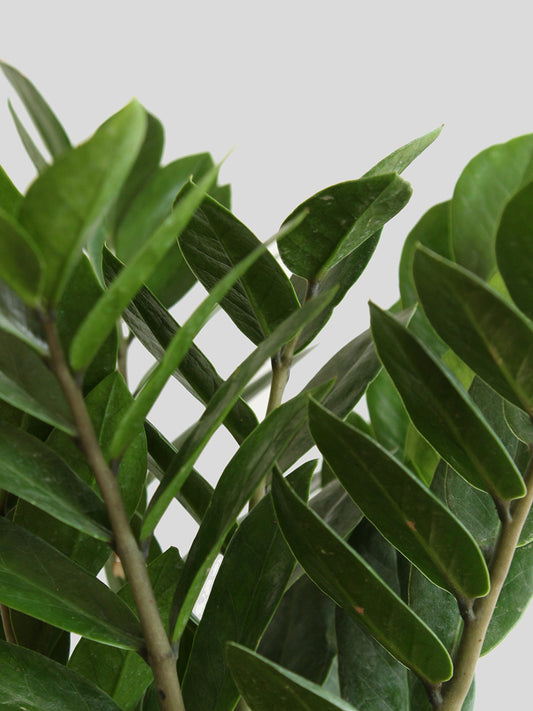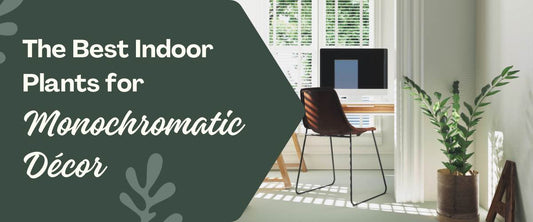Plants For Yoga And Meditation Space
Finding moments of calm & inner serenity has become increasingly crucial in today's fast-paced world. We may take a break from the rush & refocus on ourselves & find peace via meditation. Incorporating plants into your designated meditation space is one method to enhance the meditative experience.
Let’s explore the best plants for a meditation room, along with the basic idea of designing & Meditate with plants to get maximum benefits.
Here is The Best Plants for Meditation Room
Adding the following plants to your meditation area to improve air quality & aesthetics are:
1. Peace Lily (Spathiphyllum):

Peace lily is both aesthetically pleasing & has air-purifying properties. Through phytoremediation, peace lilies absorb toxic volatile organic compounds (VOCs) such as formaldehyde, benzene, & trichloroethylene from the air. Enzymes present in the plant degrade & convert these VOCs into harmless substances, which improve the air quality in the meditation room.
[product=peace-lily-large]
This plant is well-known to bring peace and harmony into your home. It is both aesthetically pleasing & has air-purifying properties.
[/product]
Also Check This: How To Care For Peace Lily
2. Areca Palm (Dypsis lutescens):

Areca palm is renowned for its ability to remove contaminants from the air, including formaldehyde, xylene, & toluene. Through a process known as biofiltration, microorganisms in the root zone of the plant break down & metabolize these harmful substances that lead to clean air around our surroundings. Then, the air purified by the plant promotes a healthier atmosphere for meditation.
[product=areca-palm-xlarge]
Buy this graceful areca palm with feather like foliage and transform any living room space. It is renowned for its ability to remove contaminants from the air
[/product]
3. Ficus Ginseng Bonsai:

Another great indoor plant is the ficus bonsai. You may feel strong & stable in your meditation place with its glossy, dark-green leaves & sturdy trunk. The ficus improves indoor air quality as well as air purification.
One of the most well-liked varieties of bonsai is the Japanese maple, which is favored for its attractive, delicate leaves & classy, draping branches. It is often trimmed in the "informal upright" style, which has a trunk with a little curve & natural, unstructured branches.
Choosing a bonsai tree for your meditation room also depends on its development pace. Some bonsai tree species grow faster than others, so choose one with minimal maintenance.
[product=ficus-bonsai-ginseng-large]
Buy this elegant miniature tree Ginseng Bonsai that is a symbol of harmony and balance. It adds a touch of elegance and tranquillity to your living space.
[/product]
4. Fiddle Leaf Fig (Ficus lyrata):

Fiddle leaf fig is well-known for its large, lustrous leaves, which contribute to the aesthetic appeal of beautiful shape & mindful presence (principles of Zen aesthetics) of a meditation room. In addition to its attractive appearance, the plant purifies the air by removing formaldehyde & benzene. This is accomplished through phytoremediation, in which the plant absorbs & decomposes toxic compounds.
[product=fiddle-leaf-fig-xlarge]
Buy this stylish indoor plant with violin shaped leaves. It showcases a dramatic and sophisticated look into your living space. This plant purifies the air by removing toxins.
[/product]
5. ZZ Plant (Zamioculcas zamiifolia):

The low-maintenance ZZ plant thrives in low light, making it ideal for meditation rooms with minimal natural light. By eliminating contaminants such as xylene & toluene, it contributes to air purification through its roots, the plant absorbs these compounds & transports them to its leaves, where they are neutralized.
product=zz-green-medium]
Buy this aesthetic indoor zz plant green. It thrives in low light, making it ideal for meditation rooms with minimal natural light.
[/product]
6. Snake Plants (Sansevieria):

The ability of snake plants to discharge oxygen at night makes them ideal for meditation rooms. In contrast to most plants, which release oxygen through photosynthesis during the day, snake plants carry out a unique form of photosynthesis known as crassulacean acid metabolism (CAM). They are perfect for increasing the quality of the air during meditation since they absorb carbon dioxide during the day & release oxygen at night.
[product=snake-plant-laurentii-xlarge]
Buy this popular and our best selling indoor plant. It has air purifying properties also it needs minimal maintenance. It is believed to bring good luck, prosperity, and positive energy.
[/product]
Also Check This: Amazing Flowers that Bloom at Night
7. Chamaedorea Palm (Chamaedorea elegans):

Chamaedorea palm often called the parlor palm, helps keep the air clean in a meditation space. Through phytoremediation, it eliminates contaminants such as formaldehyde & xylene. The plant absorbs these toxic substances through its roots & conveys them to its leaves, where they are degraded & converted into harmless substances.
[product=chamaedorea-palm-medium]
Buy this popular air purifying plant that helps keep the air clean in a meditation space. The plant absorbs these toxic substance from the air.
[/product]
8. Aglaonema:

The brightly colored leaves of Aglaonema plants are a welcome addition to a quiet space for reflection. Aglaonema has been the subject of very little scientific study, but like other plants, it helps clean the air we breathe by taking in carbon dioxide & giving out oxygen. The presence of these plants contributes to a more pleasant & oxygen-rich space in which to meditate.
[product=aglaonema-pink-anjamani-medium]
Buy our best selling beautiful aglaonema pink anjamani plant that brings luck and prosperity. it is the perfect gift choice for anyone!
[/product]
9. Bamboo:

Bamboo is an adaptable plant that can create a Zen-like vibe in a meditation space. Bamboo, like other plants, endures photosynthesis, which involves the absorption of carbon dioxide & the release of oxygen. Its sciences, however, have not been extensively studied. Nevertheless, bamboo increases oxygen levels in the space, making meditation fresh & energizing.
Remember always consider each plant's care needs to guarantee they flourish in your location.
How to Design a Meditation Room with Plants for Better Results
- Choose A Specific Spot: Choosing a calm corner or room in your home that is solely devoted to meditation helps create a sense of holiness, spirituality & separation from the world. This place lets you concentrate on your practice & enjoy the greenery.
- Location to put the plants: Place plants around the room so that they are in your line of sight when you meditate. This setting lets you see nature & gives you a sense of being connected to the earth. Also, having plants around may make it easier to breathe since they remove carbon dioxide & replace it with oxygen.
- Minimalism & simple living: Keeping the meditating area clean & simple helps create a sense of calm & lets the plants take center stage. Clearing the clutter from your meditation space can help you concentrate & relax more.
- Warm & gentle lighting: Natural light is optimal for a meditation room because of its balanced spectrum of light & also provides a positive effect on our circadian rhythm & mood. Serotonin, a neurotransmitter linked to feelings of contentment & well-being, is released in response to exposure to sunlight. If you don't have a lot of windows, try using warm, gentle lights instead.
Also Check This: Best Positive Energy Plants for Home & Office
How Do You Meditate with Plants?
The use of plants in meditation is based on the way that the human mind & plant physiology work together. Therefore, consider the following:
- Get comfortable: Find a comfortable, spine-aligned seated position, either on a cushion or a meditation chair, that allows for appropriate spinal alignment. This alignment facilitates optimal oxygen intake & deep breathing.
- Highlight plants: Focus your attention on the plants in the meditation room. Consider the plant’s colors, textures, & motions (action or process). According to a study, visually focusing on natural scenes while meditation has been demonstrated to have a calming effect on the mind & body.
- Get in touch with the environment: Imagine yourself merging with the plants & absorbing their vitality & energy. Imagine that roots are growing from your body & connecting you to the ground. This kind of visual imaging is excellent for creating a sense of connection with the environment & overall well-being.
- Deepen your breath: Practice deep, relaxed breathing via your nose & out through your mouth. Having plants in your meditation room improves the air quality, making it more conducive to deep breathing. Deep breathing stimulates the parasympathetic nervous system, which promotes relaxation & decreases stress. Also, the brain chemical dopamine, linked to pleasure & reward, is released during deep breathing.
Also Check This: Amazing Night Flower Plants
The Benefits of Having Plants in Your Meditation Space
According to research, the design enhances the cognitive & affective benefits of meditation environments, such as:
1. Improved atmospheric-air quality:
Photosynthesis is the process by which plants produce oxygen (the natural air purification system of our planet) & absorb carbon dioxide. These study-proven natural air purification methods assist in the removal of harmful air pollutants & increase the oxygen content in the room, creating a healthier atmosphere for deep breathing while improving the meditative experience.
2. Interaction with the natural world:
Being surrounded by greenery reinforces our connection to the natural world, reminding us of our interdependence & promoting a sense of harmony. Several psychological & physiological benefits, including less fear, increased happiness, & overall better health, have been linked to spending time in nature.
3. Positive connection & cortisol modulation
According to a study, exposure to even modest amounts of greenery can assist with stress reduction. The practice of managing cortisol levels via the use of tactile activities, such as interacting with plants, is more than simply a symbolic gesture. The stress hormone cortisol can be reduced by physical contact with plants, leading to a more relaxed & open state during meditation.
4. Improved concentration & focus:
According to research, having plants in a meditation space can boost the ability to concentrate & focus. Studies show that outdoors & plants relieve brain restlessness & improve attention span, making meditation more meaningful.
5. Improved sense of peace with Aromatherapy
Plants' natural beauty & soothing characteristics create a peaceful atmosphere that encourages relaxation & inner tranquillity. The visual appeal of plants, combined with their calming fragrances & the bioactive compounds they produce, can alleviate stress & anxiety, which encourages a deeper state of meditation. This is also offered as an option for those seeking nonconventional medical care, known as aromatherapy.
Also Check This: Best indoor plants for living room
Conclusion
Exquisite plants (mentioned above) in a meditation area are soothing & beneficial in nature. The ideal plants for a meditation room, together with careful preparation & awareness of the present moment, may help you establish a tranquil space in which to reconnect with your inner self.
Greenkin can help you make your meditation space a haven of tranquility so you can focus on your own personal growth & find happiness inside.






